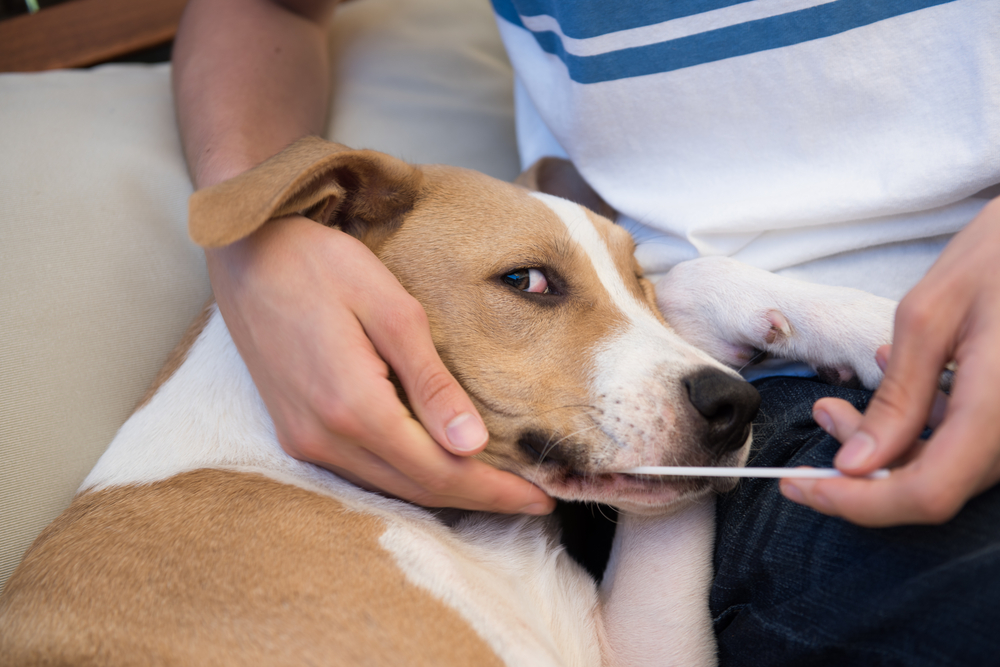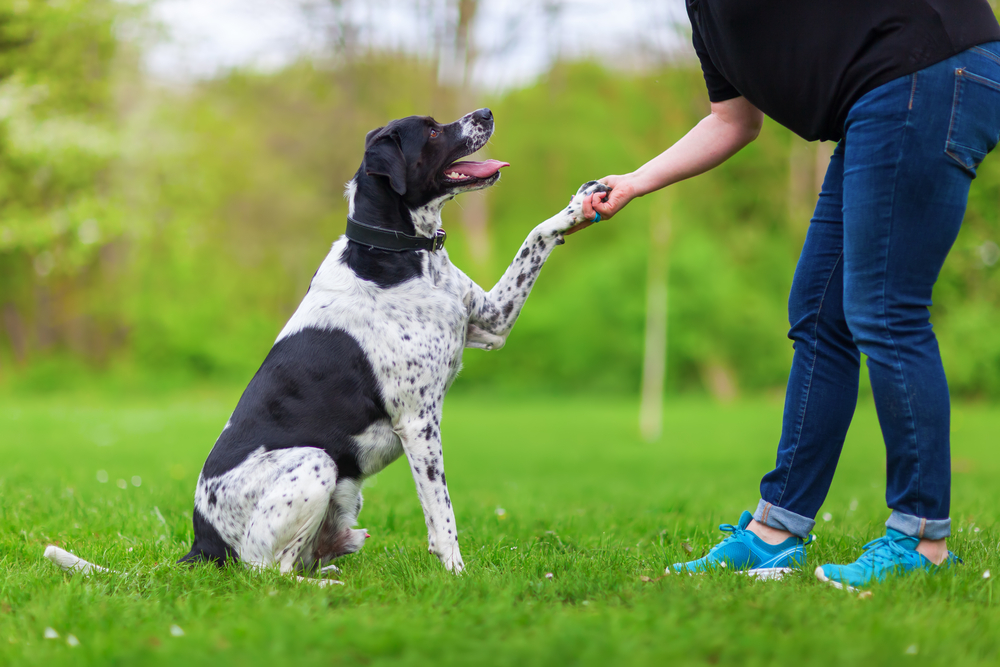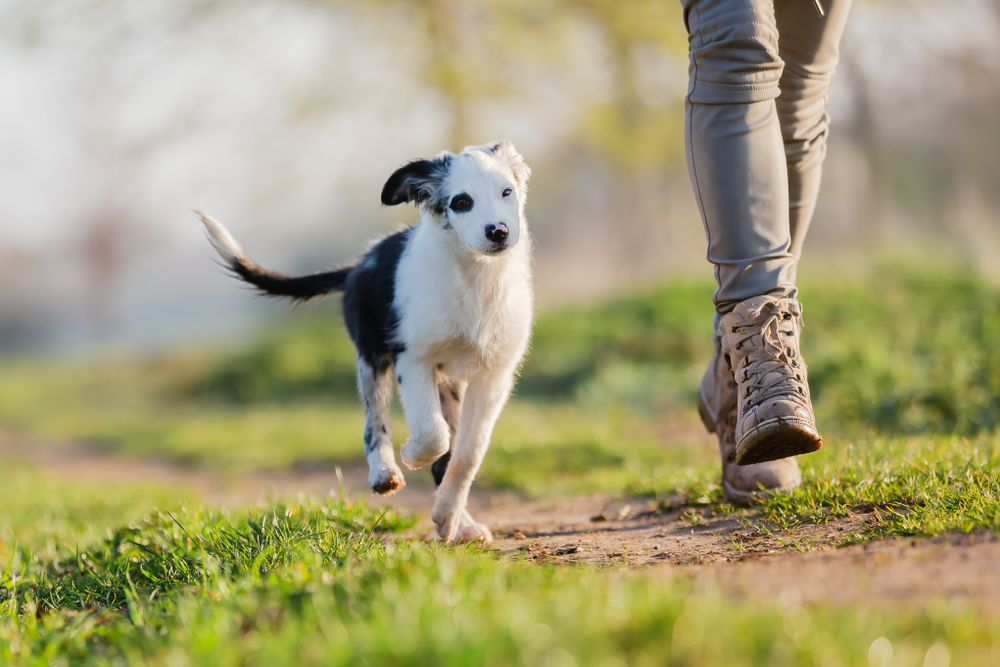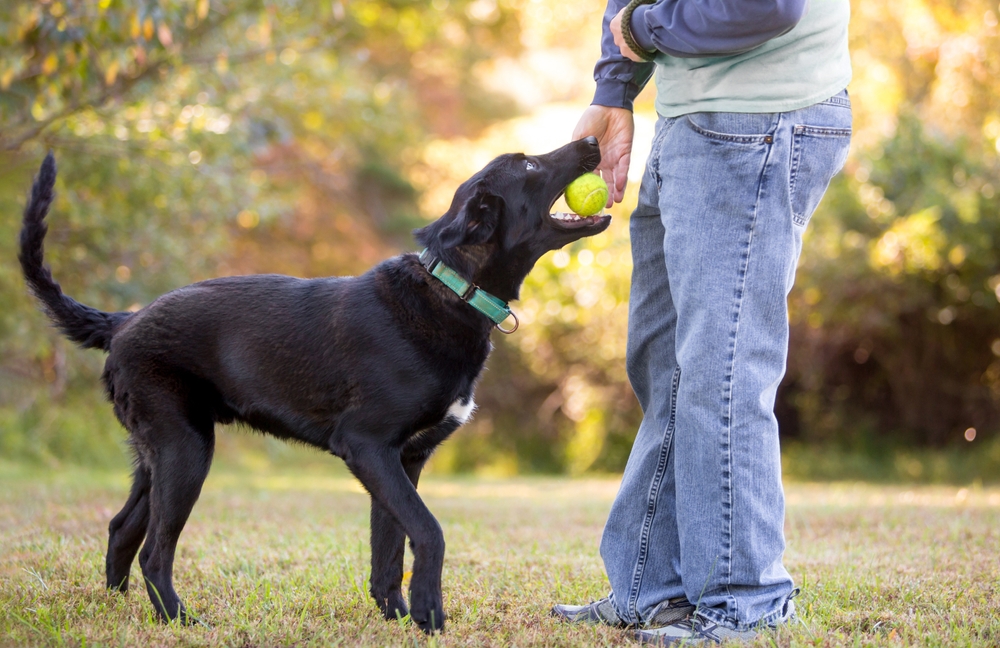Adopting a mixed-breed dog invites a world of joy into the home and plenty of guesswork about how you should train them. While purebreds bear relatively predictable temperaments and physical traits, mixed breeds often have personality quirks that aren’t obvious at first glance.
With countless possibilities surrounding a mixed breed’s genetics, background, and tendencies, figuring out effective strategies to promote obedience and a strong bond can be tricky. Although every pet deserves a tailored approach, we’ll explain common tips and techniques to train mixed-breed dogs from any walk of life.

The 9 Tips to Train a Mixed-Breed Dog
1. Get a DNA Test
If you’re trying to formulate a sensible training plan and find appropriate activities for your mixed-breed dog, discovering their specific blend of breeds can be a sound starting point. DNA tests like Embark1 or Wisdom Panel2 are available online.
With these, you can gain insights into the percentages of various breeds in your mixed mutt, their unique health issues, and much more. The tests are surprisingly accurate and offer a solid foundation for formulating routines that accommodate your dog’s instinctual behaviors, energy level, and temperament.

2. Discover What Drives Your Dog
Even though every dog, especially a mixed breed, is unique in build and character, some traits are common to the species, giving you a starting point for efficient training. Descended from wolves, all dogs have some degree of prey drive.
While the general predatory process is similar for any dog, the prey drive can differ depending on the breed’s history. The following are some examples of the differences in prey drive between dog types:
- Terriers like digging to chase prey underground.
- Hounds enjoy tracking prey by sight or smell.
- Retrievers like retrieving objects.
- Herding breeds like to chase and herd people, pets, and objects.
The prey drive is powerful. Though it can often overwhelm even the most ingrained training, it’s also something you can use to make your rewards more valuable. More importantly, knowing what naturally compels them will help you find the best training approach, realistic expectations, and enrichment activities and games.
With appropriate activities to keep your dog engaged, they’ll be more docile and receptive to training.
3. Understand Your Dog’s Training Needs
All dogs have unique tendencies and training difficulties. Terriers and Huskies are typically strong-willed, Pit Bulls and many Asian breeds can be aloof, and Vizslas and GSDs often get separation anxiety. Even some of the most trainable dogs, like Border Collies and Australian Shepherds, need jobs and constant mental enrichment to satisfy the active minds that make them so biddable.
Research your dog’s genealogy and the challenges inherent with each breed. More enrichment is generally a solid starting point for most issues, but knowing your dog’s particular struggles will show you where to focus your training and how you should communicate with them.

4. Understand Your Dog’s Physical Limitations
A practical exercise and training routine for your mixed breed must reflect their physical limitations as much as their temperament and motivation. Consider your dog’s build and where it might cause issues.
For instance, dogs like Dachshunds are more prone to IVDD and suffer injuries from short falls, while short-snouted brachycephalic breeds often suffer from heat exhaustion and breathing troubles. You can talk to a vet about potential health struggles so you can plan enrichment activities that keep them safe, happy, and excited for more.
If you need to speak with a vet but can't get to one, head over to PangoVet. It's our online service where you can talk to a vet online and get the advice you need for your pet — all at an affordable price!

5. Determine Your Dog’s Exercise Needs
Figuring out your dog’s exercise needs often takes trial and error, though you can get a general sense when you know their mix. A Husky-Australian Shepherd mix will have a seemingly endless motor, while a Shih Tzu-French Bulldog will probably enjoy laying around the house.
Still, every dog needs at least a little exercise daily. If you’re unsure what your dog can or can’t tolerate, start with an hour of exercise daily. Give your dog a brisk walk or two and about 20–30 minutes of playtime broken up into a few sessions.
Monitor your dog’s behavior, and adjust their exercise until you optimize the routine. Reduce the exercise time if your dog seems tired or disinterested, and add more if they become agitated or bored throughout the day. You’ve struck the proper balance if your dog shows calm, docile behavior while still being upbeat and ready to engage with you.

6. Set Boundaries Early
Make it clear what your dog is and isn’t allowed to do from day one. Setting immediate boundaries will make them second nature to your dog and keep you from having to issue corrections later. Examples of the essential boundaries include:
- No jumping on people entering the door.
- No counter-surfing or begging at the table.
- No tugging on the leash.
- No jumping up on the couch.
- No barking at the neighbors in the backyard.
Sometimes, you’ll have to manage these behaviors with physical boundaries, like setting up baby gates. You want to prevent your dog from practicing unwanted behaviors so they don’t realize satisfaction from them. By being consistent, firm, and fair, your dog will know what they need to do without even considering the possibility of misbehaving.
7. Train Calmness and Patience
Patience is essential for any pet, but it’s incredibly vital for a mixed breed that may be more wound up than the average dog. Training your dog to be patient takes active and passive approaches. Crucial obedience behaviors, like sit, stay, and place, should be an early focus, but you can also work on patience randomly throughout the day.
Have your dog wait for you to release them before going outside for a walk, leaving their crate, eating their food, or even fetching their ball while playing in the yard. Whatever they want, they must earn it. Waiting will teach them to show manners to guests, wait for your direction, and control their urges in the face of exciting stimuli, keeping them and those around you safe.

8. Train Loose-Leash Walking Daily
Loose-leash walking is a critical skill for every dog and a vital step toward off-leash walking. Plus, it provides benefits for you and your dog. It’s an excellent exercise for both of you, and your dog will have a chance to socialize, become desensitized to various stimuli, and work on commands like heeling and waiting.
Loose-leash walking relies on teaching your dog to heel, using treats to lure them into position, and making them used to walking by your side. Checking in relates to this, another habit you can reward by capturing your dog looking at you.
The goal is to make your dog responsive to your movements and follow your command, building a trusting dynamic that promotes your leadership so your dog knows to look to you for guidance and permission.
9. Generalize Your Training
Developing dependable behaviors requires ongoing training in unique contexts. Dogs don’t generalize behaviors well, meaning they don’t easily understand that one rule can apply in different situations. They may not know to do a behavior if they only practice it in your house or around similar context clues.
Train them in several locations and expose them to as many people, animals, and objects as possible to show that the only criteria they need to perform a behavior is whether you give a command.
You’ll usually have to take a few steps back and start with the basics when proofing behaviors. Your dog may obey your “stay” command in your living room but pop out of it immediately when you try it at a new park. Whatever your training, act as if it’s the first time teaching it when you try it in a novel setting so you can reward incremental gains and keep your dog successful.

Are Mixed-Breed Dogs Harder to Train?
Several studies have noted potential differences between mixed-breed and purebred dogs, though others have found no significant distinctions in trainability or temperament. The primary differences many perceive are greater disobedience, anxiety, fear, and aggression in mixed breeds. As a result, they have a reputation for being harder to control.
The problem is that many of these general differences aren’t due to genetics but rather upbringing, environment, and factors dependent on the owner rather than the dog. One study considered these differences, comparing purebreds and mixed breeds while controlling for demographic and dog-keeping factors.
All things being equal, the study found mixed breeds do indeed show more problematic behaviors and are typically less calm. Their trainability, however, was higher. While mixed breeds often come with unique challenges to work around, training is often more straightforward than you might anticipate.


Final Thoughts
There are no hard and fast rules unique to training mixed breeds, and you shouldn’t expect them to be more difficult than any other variety. More important than anything is how you raise them, and a patient, positive approach and loving relationship can bring out the best in your dog no matter their breed.
Featured Image Credit: encierro, Shutterstock




















